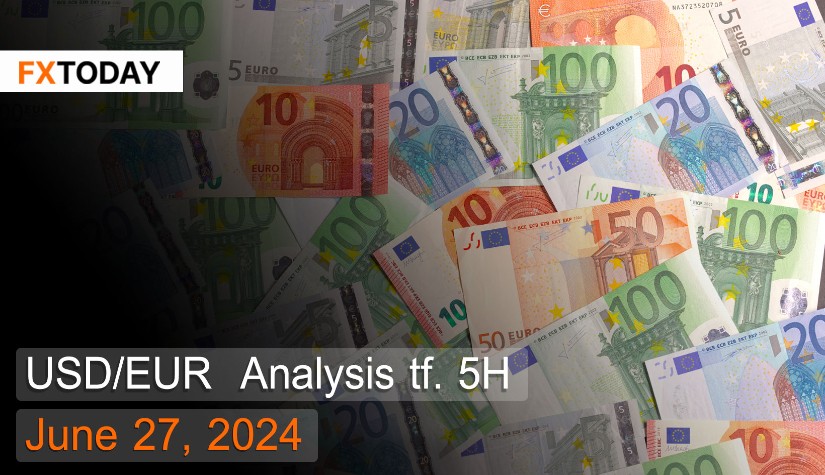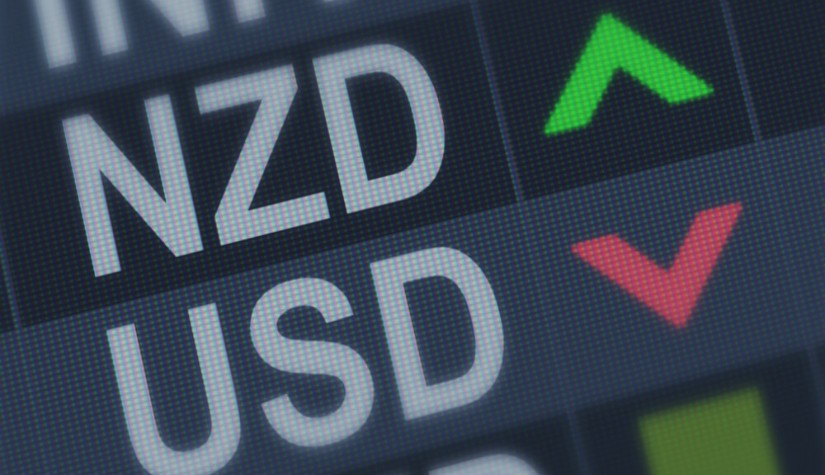The ECB may cut interest rates up to 2 more times this year.
The Euro continues to weaken following a statement from Olli Rehn, a member of the ECB, indicating the possibility of two more interest rate cuts this year. Additionally, recent data shows declining consumer and business confidence in Germany and France due to rising inflation in Germany and growing concerns over France's legislative elections. The sudden election called by President Emmanuel Macron has heightened economic uncertainty within the country.
Inflation in the Eurozone rose to 2.6% year-on-year in May, aligning with market expectations. Energy prices increased slightly, while service sector prices remained steady at 4.1%. However, the recent increase in demand for services has driven inflation in Germany to 2.8%, in France to 2.6%, and in Spain to 3.8%. Meanwhile, core inflation, which excludes volatile energy and food prices, rose to 2.9% from 2.7%. This has led the ECB to adjust its inflation forecasts upward, predicting general inflation at 2.5% in 2024, 2.2% in 2025, and 1.9% in 2026.
The growth in household loans in the Eurozone increased by 0.3% year-on-year in May, up slightly from 0.2% the previous month. This slight increase marks the slowest growth rate in household credit since 2015, consistent with the ECB's interest rate hikes to address inflation. Additionally, overall credit growth for the private sector, including households and non-financial companies, slowed to 0.8%.
The Composite PMI fell to 50.8 in June from 52.2 the previous month, below market expectations of 52.5, but still enough to indicate continued expansion in private sector economic activity. This growth was driven solely by the services sector, which, despite slower growth, was sufficient to offset the sharpest contraction in the manufacturing sector in six months. New orders overall contracted for the first time in four months, pressured by declining export demand, leading companies to reduce workloads to ensure output met demand and to cut down on stock levels. Meanwhile, input cost inflation remained low, allowing companies to scale back production without significantly impacting costs.
Techical analysis data (5H)
Resistance: 0.9356, 0.937, 0.9376
Source: Investing.com
Buy/Long 1: If the price touches support in the price range of 0.9328 - 0.9335 but cannot break the support at 0.9335, you may set a TP at approximately 0.937 and SL at around 0.9314 or according to your acceptable risk.
Buy/Long 2: If the price breaks the resistance in the price range of 0.9356 - 0.937, you may set a TP at approximately 0.9376 and SL at around 0.9328 or according to your acceptable risk.
Sell/Short 1: If the price touches resistance in the price range of 0.9356 - 0.937 but cannot break the resistance at 0.9356, you may set a TP at approximately 0.9328 and SL at around 0.9376 or according to your acceptable risk.
Sell/Short 2: If the price breaks the support in the price range of 0.9328 - 0.9335, you may set a TP at approximately 0.9314 and SL at around 0.937 or according to your acceptable risk.
Pivot point June 27, 2024 07:15 PM. GMT+7
|
Name
|
S3
|
S2
|
S1
|
Pivot Points
|
R1
|
R2
|
R3
|
| Classic | 0.9314 | 0.9328 | 0.9335 | 0.9349 | 0.9356 | 0.937 | 0.9376 |
| Fibonacci | 0.9328 | 0.9336 | 0.9341 | 0.9349 | 0.9357 | 0.9362 | 0.937 |
| Camarilla | 0.9337 | 0.9339 | 0.9341 | 0.9349 | 0.9345 | 0.9347 | 0.9349 |
| Woodie's | 0.9312 | 0.9327 | 0.9333 | 0.9348 | 0.9354 | 0.9369 | 0.9374 |
| DeMark's | - | - | 0.9332 | 0.9347 | 0.9353 | - | - |
















